Invasive Species
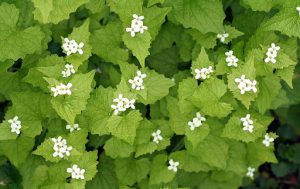
GARLIC MUSTARD
Garlic mustard is a primary noxious weed found in shady landscaped areas including parks and golf courses. The plant is propagated by self-seeding. In the home landscape, it is best pulled by hand before the plant flowers.
Characteristics:
- First plant year has heart-shaped, scallop-edged leaves
- Leaves become smaller as they progress up the flowering stem
- Second year plant has 2-3′ tall flowering stems
- Bears numerous small clusters of small white flowers in late spring
- Has a garlic odor when crushed
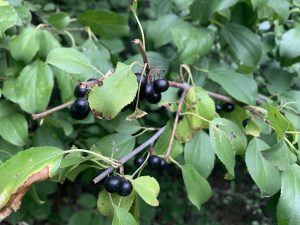
BUCKTHORN
Once planted as an ornamental shrub, common buckthorn is a restricted noxious weed. It is illegal to import, sell or transport buckthorn in Minnesota.
- Common buckthorn is found in oak forests, savannas, prairies and riparian woods.
- It completely eliminates plant diversity in the understory over time.
- Plants leaf out early and hold their leaves late into the fall, creating dense shade.
- Seeds have a laxative effect on birds, aiding in seed dispersal
Helpful ways to remove buckthorn and other hard to eradicate invasives can be found at: https://apps.extension.umn.edu/garden/diagnose/weed/idlist.html
Gardening Help
Resources from the University of Minnesota
These diagnostic tools will help you identify and treat common yard and garden problems
Information About Attracting Pollinators
- Annual Flowers that Attract pollinators
- Pollinator Identification
- Plants for Minnesota Bees
- Bringing Nature Home – Douglas Tallamy and his book, Bringing Nature Home, is a good source for promoting native plants and identifying species that support the most pollinators and wildlife in general. This site has a lot of interesting information.
Pests
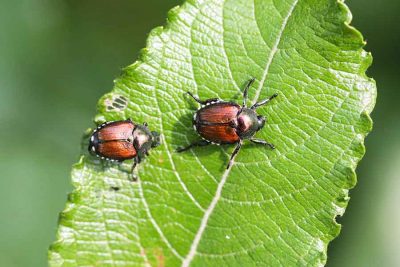
JAPANESE BEETLES
These beauties are much prettier than they are friendly. There is a lot of information out there about controlling Japanese beetles…not all of it is accurate. Visit the University of Minnesota link to get accurate information for our area. Japanese Beetle Information from U of M
The best way to control the beetles is to manually remove the bugs from your plants. Using a cup with a drop or two of dish soap, tap the beetle from the leaf into the cup. While the traps are available and attract and catch many beetles, many more are attracted to your yard than killed. If the beetles are in your trees (lindon and fruit trees are favorites) traps may be your only solution.
There are ways to control the beetles when they are grubs but use of pesticides should be limited since pesticides can be more dangerous than helpful for controlling the Japanese beetles. WATCH A VIDEO ON MANAGING JAPANESE BEETLES.
(Information from Carver-Scott Extension Master Gardeners)
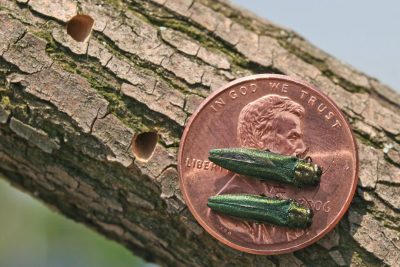
EMERALD ASH BORER
Emerald ash borer (EAB) is a very destructive beetle that has killed millions of North American ash trees. It is considered a quarantined invasive species monitored closely by the Minnesota Department of Agriculture.
The first step in protecting your ash trees is being aware of your current situation. Start by taking an inventory of your trees. How many do you have? How healthy do they appear? Then determine what zone you are in through resources such as your city foresters or MN DNR’s “emerald ash borer status map”. If you are near an affected zone, taking preventative action will be your next step.
Do not bring in or use firewood from outside your county. Be aware of and vigilantly check for EAB signs and symptoms. These include canopy thinning/crown dieback, new growth near the base of the trunk, woodpecker damage, and, specifically, small 1.8” wide D-shaped exit holes in the trunk, s-shaped tunnels under splitting bark, and the presence of pupae/larvae/adults. The active period for adult EAB is around May 1 to Sept 30. If you see any, please call 888-545-6684 or email arrest.the.pest@state.mn.us.
If your ash trees are within 15 miles of other infested trees, then yours are probably at risk. There are insecticidal options available to you as well as professional arborists. Be sure to consider treatment conditions, ecological effects, and cost when considering your options for treatment.
(Information from Carver-Scott Extension Master Gardeners)
Pollinators
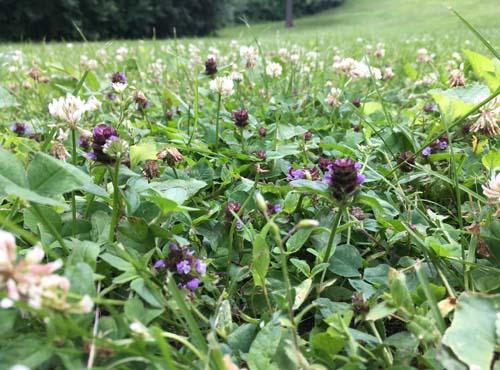
CREATING A BEE LAWN
As concerns grow over the declining population of MN pollinators, the University of Minnesota offers advice to home owners on how to create a bee friendly lawn. Read about planting and maintaining a bee lawn – CLICK HERE – BEE LAWNS
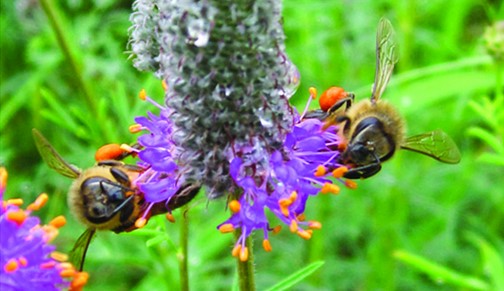
PLANTS FOR MINNESOTA BEES from the University of Minnesota
Learn how to provide a diverse array of plants to ensure that you support
a diverse array of bee species with Plants for Minnesota Bees (html version).
Download the PDF HERE
